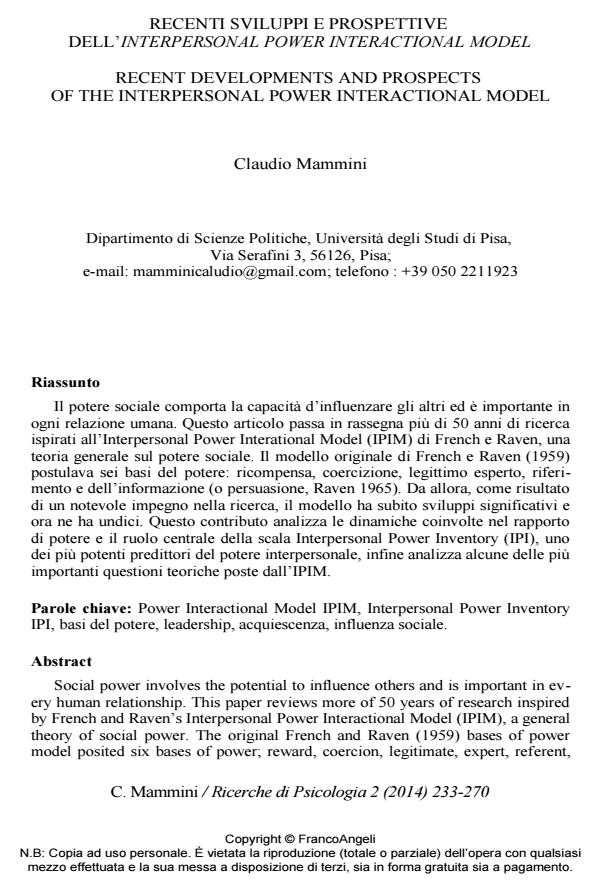Recent developments and prospects of the interpersonal power interactional model
Journal title RICERCHE DI PSICOLOGIA
Author/s Claudio Mammini
Publishing Year 2015 Issue 2014/2
Language Italian Pages 38 P. 233-270 File size 321 KB
DOI 10.3280/RIP2014-002002
DOI is like a bar code for intellectual property: to have more infomation
click here
Below, you can see the article first page
If you want to buy this article in PDF format, you can do it, following the instructions to buy download credits

FrancoAngeli is member of Publishers International Linking Association, Inc (PILA), a not-for-profit association which run the CrossRef service enabling links to and from online scholarly content.
Social power involves the potential to influence others and is important in every human relationship. This paper reviews more of 50 years of research inspired by French and Raven’s Interpersonal Power Interactional Model (IPIM), a general theory of social power. The original French and Raven (1959) bases of power model posited six bases of power; reward, coercion, legitimate, expert, referent, and informational (or persuasion; Raven, 1965). Since then, as the result of considerable research, the model has gone through significant developments and now has eleven. This article analyze the dynamics involved in the power relationship and the central role of scale of Interpersonal Power Inventory (IPI) one of the most powerful predictors of interpersonal power, finally analyzes some of the most important theoretical questions posed by IPIM theory.
Keywords: Power Interactional Model IPIM, Interpersonal Power Inventory IPI, Power Bases, leadership, compliance, interpersonal influence.
Claudio Mammini, Recenti sviluppi e prospettive dell’interpersonal power interactional model in "RICERCHE DI PSICOLOGIA " 2/2014, pp 233-270, DOI: 10.3280/RIP2014-002002